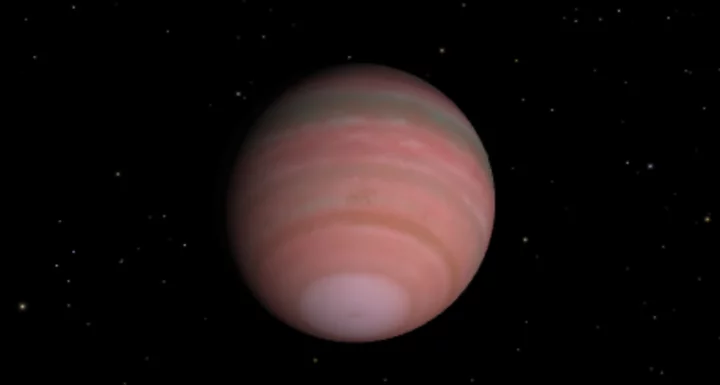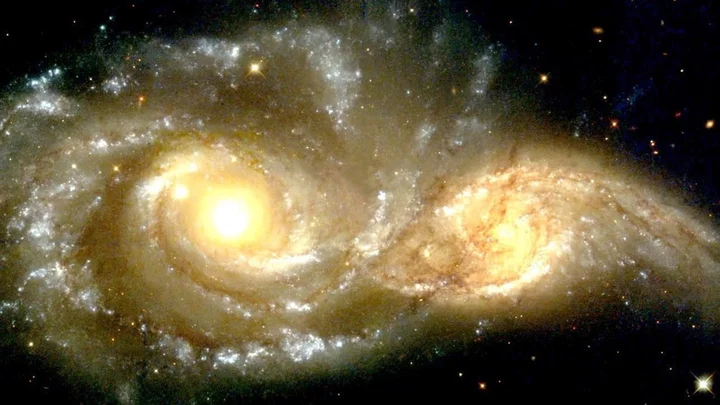Astronomers spotted a curiosity in deep space.
Using the powerful Very Large Telescope facility atop the high Chilean desert, scientists captured an image of a star system, which you can see below. This system, called HIP 81208, has a massive central star, which is orbited by another star called a brown dwarf (a much smaller "failed star"). What's more, yet another small star orbits much farther away, and researchers have just identified "a never-before-seen hidden gem" circling it. The object is a planet some 15 times the mass of Jupiter, and it's a mouthful: "HIP 81208 Cb."
"The discovery of Cb means that HIP 81208 is a uniquely intriguing system with two stars and two smaller bodies orbiting each one — in other words, a hierarchical quadruple system," the European Southern Observatory, a collaborative science organization of European nations, explained. "The mass of the newly found Cb object places it right at the border between planets and brown dwarfs — failed stars that are not massive and hot enough to fuse hydrogen into helium."
SEE ALSO: NASA spacecraft flies right through sun explosion, captures footageIn the image below, "A" is the massive central star, which is orbited by the brown dwarf, "B." On the outskirts of this system is the star "C," along with the newly-found exoplanet (a planet that exists beyond our solar system), "Cb."
The distant solar system HIP 81208 as captured by the Very Large Telescope in Chile. Credit: ESO / A. Chomez et al.Want more science and tech news delivered straight to your inbox? Sign up for Mashable's Light Speed newsletter today.
Often, exoplanets are so distant, relatively small, and hard to see that astronomers don't capture actual images of them. Astronomers usually rely on techniques like the transit-method, wherein a far-off world passes in front of its star, resulting in temporarily diminished starlight.
But the Very Large Telescope observatory, containing telescopes with mirrors nearly 27 feet across, can capture direct, through low-resolution, images.
Beyond Earth, humanity's most powerful space observatory, the James Webb Space Telescope (operated by NASA and other space agencies) spends about a quarter of its time looking into the atmospheres of distant exoplanets, providing unprecedented insights into these distant worlds. Some are searing hot, inhospitable places. But some might be water worlds, perhaps harboring conditions that could allow alien life to flourish — though there's still zero evidence any life dwells beyond our planet.









